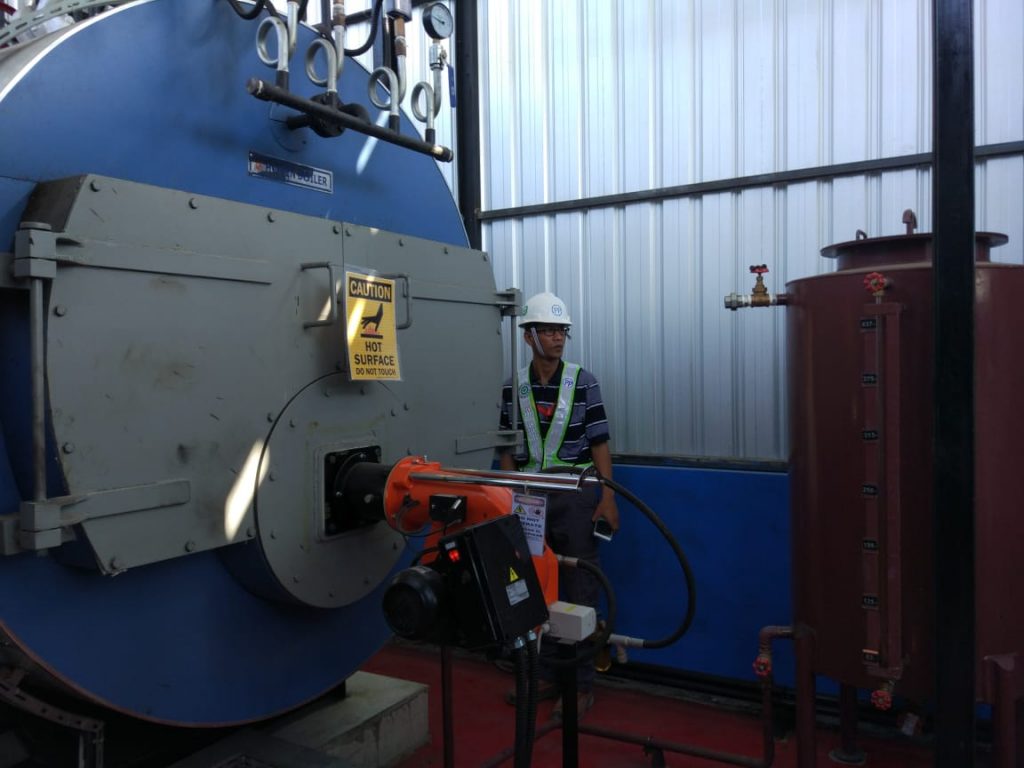ITS Lecturer Initiates Processing of Waste that Produces Electricity

Dr. Ridho Hantoro, S.T., M.T. (on the right), with PLTSa Putri Cempo Plant Manager (on the left) while researching waste processing into electrical energy
ITS Campus, ITS News –
Various methods have been developed by researchers to implement the processing of waste into alternative energy producing electricity. One of them was developed by one of the lecturers of Institut Teknologi Sepuluh Nopember (ITS), Dr. Ridho Hantoro, S.T., M.T., through hydrothermal carbonization-based research which has the advantage of being able to significantly reduce the mass of waste in the process.
The research was carried out to solve the problem of the accumulation of wastes in Indonesia, especially in big cities. There are already local governments that make use of wastes into electricity but it turns out that several types of methods still provide insignificant mass reduction problems.
This lecturer from the ITS Physics Engineering Department was inspired by the conversion of energy values and a large amount of rubbish that mounts at the Final Disposal Site (TPA). One of the TPAs that applies this conversion method is the TPA Putri Cempo under the Surakarta City Government. “The results of the hydrothermal carbonization process will be used as raw material for gasification and gas engines to produce electricity,” he further elaborated.

Dr. Ridho Hantoro, S.T., M.T., while doing his research at PLTSa Putri Cempo
Through his research entitled Study of Energy Generation through Municipal Waste Management (MSW) with Hydrothermal Carbonization (HTC) and Gasification Process, Ridho focused on using HTC and Gasification methods. “This method has the advantage of being able to increase the calorific value of waste materials in the form of solids while reducing the waste mass significantly in the process,” mentioned this lecturer who is involved in the field of energy efficiency.
In the process, this graduate of ITS Marine Engineering Postgraduate program revealed that the wastes are separated from the metal and existing toxic materials, then put into the HTC reactor. At saturation conditions usually, 23 bars must remain controlled, it also depends on the condition and composition of the waste characteristics. “It can be plastic or organic waste such as vegetables, household waste, plastic, paper, and others,” Ridho expressed repeatedly.
This man, who was born in 1976, for about four to ten hours will form a carbon slurry (char). After that, the pulp’s water content is removed and then dried and turned into briquettes. The dried briquette is put into the gasifier, and pure methane is treated.

Hydrocarbon (on the left) which is dried and will be turned into briquettes (on the right)
Furthermore, it is put into a gas engine or combustion motor that will produce electricity as well as a generator set. “If the utilization of waste into biogas will produce organic gas, the results released from the gasifier will be in the form of synthetic gas (syngas),” Ridho revealed.
According to this lecturer who is involved in the renewable energy sector, the research that has been done is expected to be able to contribute to solving the problem of municipal waste. “Next I will go further with this research by making a prototype, then try to apply it,” concluded this bespectacled man. (zar/ory/ITS Public Relations)
Related News
-
Facilitating Creativity of Students, ITS Information Systems Department Presents CCWS
ITS Department of Information Systems students conduct a discussion in one of the available spaces in the ITS Digital
January 20, 2020 20:01 -
ITS Explores Electrification Cooperation with PT Vale Indonesia
ITS Campus, ITS News — Following up on the Memorandum of Understanding (MoU) with PT Vale Indonesia, Institut Teknologi
January 20, 2020 20:01 -
ITS Reaches Top 7 BRIN Collaborators with 309 Scientific Publications
ITS Campus, ITS News — Institut Teknologi Sepuluh Nopember (ITS) continues demonstrating its commitment to strengthening collaboration in research
January 20, 2020 20:01 -
The Only One from Indonesia, ITS Student Becomes Erasmus+ Scholarship Awardee
ITS Campus, ITS News — Civitas academica of Institut Teknologi Sepuluh Nopember (ITS) has once again contributed to making
January 20, 2020 20:01
